 Endangered mammals in Kyoto Prefecture
Endangered mammals in Kyoto Prefecture
Kyoto Prefecture has no alpine or subalpine zones. Because of this, no alpine mammals inhabit the prefecture. Instead, montane mammal species are dominant, along with species that inhabit flat farmland and river terraces. Mammal species observed in Kyoto Prefecture number 52 in 20 families and seven orders, of which 40 species in 16 families and seven orders are native. On the other hand, 12 species in nine families and three orders are introduced species, including raccoon and nutria. The Kyoto Prefecture Red Data Book lists 27 species of native mammals, including two extinct, nine critically endangered, six endangered, seven vulnerable, and three near threatened & least concern species. Accordingly, 27 of 40 native species in the prefecture are endangered, accounting for 67.5% of the total.
The List of Biological and Geological Components of the Natural Environment of Kyoto Prefecture (Japanese)
Kyoto Prefecture Red List (Japanese)
Kyoto Prefecture Red List
| Extinct | Critically Endangered | Endangered | Vulnerable | Near Threatened & Least Concern | Sum | Total number of species in Kyoto | |
|---|---|---|---|---|---|---|---|
| Mammals | 2 | 9 | 6 | 7 | 3 | 27 | 52 |
Typical endangered species
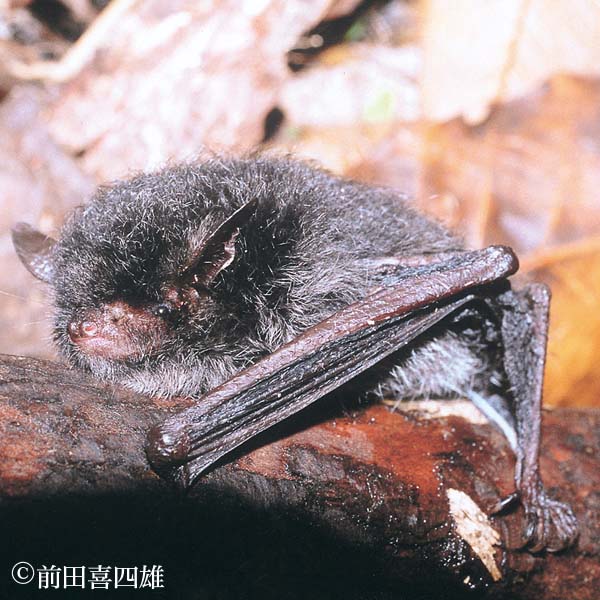
KUROHOHIGEKOMORI
Common Name(s)
Frosted myotis,
Blackish whiskered bat
Order
Chiroptera
Family
Vespertilionidae
Scientific Name
Myotis pruinosus
(Yoshiyuki, 1971)
Kyoto Prefecture Red List
Critically Endangered
IUCN RED LIST
EN
Outline
Blackish whiskered bats hide in tree hollows during daylight hours. They leave their hiding places at dusk to catch and feed on flying insects. Their breeding season is summer.
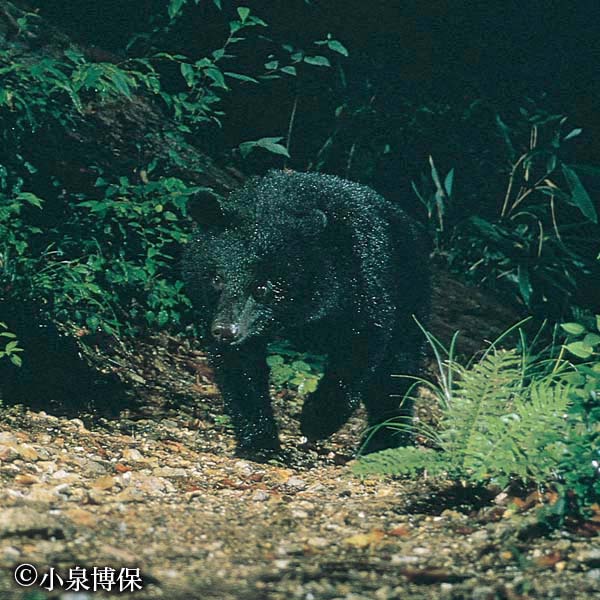
TSUKINOWAGUMA
Common Name(s)
Japanese black bear
Order
Carnivora
Family
Ursidae
Scientific Name
Ursus thibetanus japonicus
(Schlegel, 1857)
Kyoto Prefecture Red List
Critically Endangered
IUCN RED LIST
VU
Outline
Japanese black bears have a V-shaped white patch on their chest. They are herbivore-oriented omnivores, feeding on bamboo shoots, bees, and nuts.
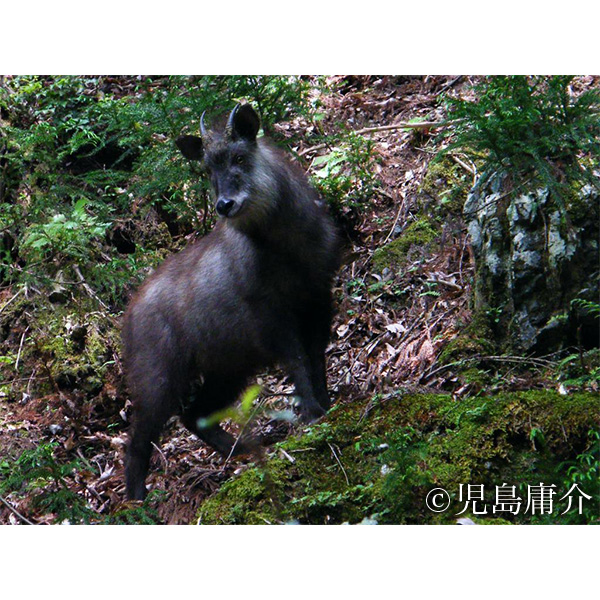
NIHONKAMOSHIKA
Common Name(s)
Japanese serow
Order
Artiodactyla
Family
Bovidae
Scientific Name
Capricornis crispus
(Temminck, 1845)
Kyoto Prefecture Red List
Critically Endangered
IUCN RED LIST
LC
Outline
Both sexes of Japanese serow have the same form with two hollow horns about 15 cm in length. They inhabit deciduous broad-leaved forests, composed of trees such as beech and deciduous oak.
Special Natural Monument
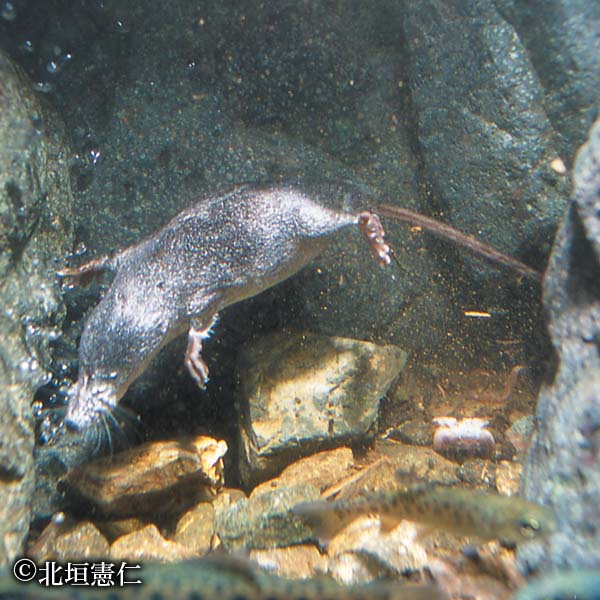
KAWANEZUMI
Common Name(s)
Japanese water shrew
Order
Eulipotyphla
Family
Soricidae
Scientific Name
Chimarrogale platycephala
(Temminck, 1842)
Kyoto Prefecture Red List
Endangered
IUCN RED LIST
LC
Outline
The Japanese water shrew is a large semiaquatic shrewmouse. They inhabit mountain stream areas and feed on aquatic insects and fish.
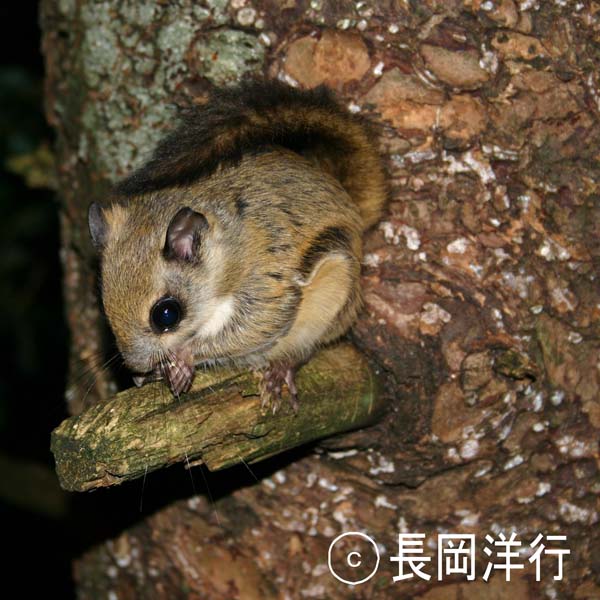
HONDOMOMONGA
Common Name(s)
Japanese lesser flying squirrel,
Japanese dwarf flying squirrel
Order
Rodentia
Family
Sciuridae
Scientific Name
Pteromys momonga
(Temminck, 1844)
Kyoto Prefecture Red List
Endangered
IUCN RED LIST
LC
Outline
Japanese lesser flying squirrels have flaps of skin spread between the forearms and hind legs. They build nests in tree hollows and eat tree leaves, acorns, and insects.
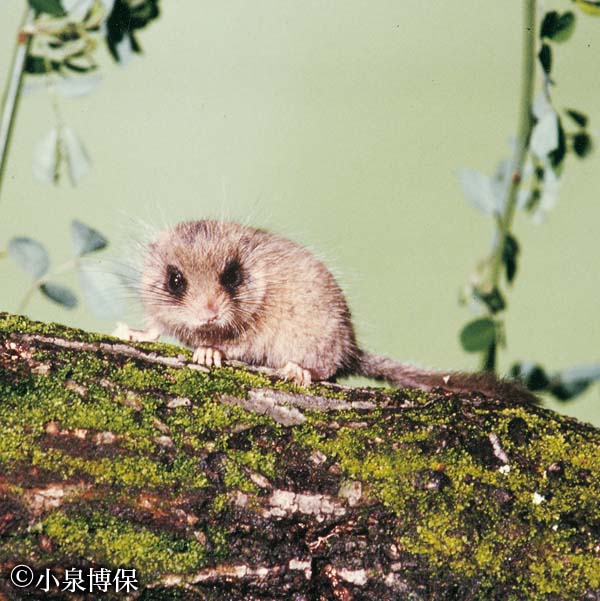
YAMANE
Common Name(s)
Japanese dormouse
Order
Rodentia
Family
Gliridae
Scientific Name
Glirulus japonicus
(Schinz, 1845)
Kyoto Prefecture Red List
Endangered
IUCN RED LIST
LC
Outline
Japanese dormice are small and mouse-like in appearance, but have a furry tail and a distinct black stripe on their back. They are nocturnal and arboreal.
Natural Monument
Contact: Kyoto Prefecture Department of the Environment
Nature and Environmental Conservation Division
Tel 075-414-4706 FAX 075-414-4705
e-mail: [email protected]
〒602-8570 Yabunouchi-cho, Nishiiru, Shinmachi, Shimodachiuri-dori, Kamigyo-ku, Kyoto-shi
